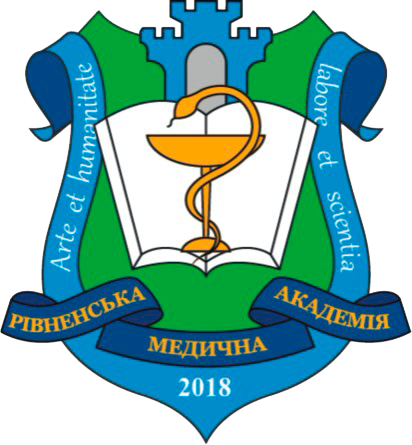INTEGRATION OF BLENDED LEARNING IN COMPUTER SCIENCE COURSES IN THE CONTEXT OF INFLUENCE ON THE DEVELOPMENT OF STUDENTS' PROFESSIONAL COMPETENCE
DOI:
https://doi.org/10.32782/health-2024.1.29Keywords:
blended learning, computer science, professional competence, pedagogical challenges, e-learning, technology integrationAbstract
In the modern conditions of the educational process, especially in the field of computer sciences, blended learning is an effective tool for developing the professional competence of students. This approach combines traditional learning with distance elements, providing greater flexibility and accessibility of education. The article analyzes the influence of the implementation of a mixed learning format in computer science courses on the formation of students' professional competencies. The theoretical aspects and key advantages of the mixed format of education, its possible difficulties and disadvantages are considered. Particular attention is paid to the analysis of how a mixed learning format can ensure deeper assimilation of theoretical materials, improvement of practical skills and growth of students' motivation. The purpose of the study is to analyze the impact of blended learning on the development of professional competence of students of computer science courses. The task is to study theoretical approaches to blended learning, evaluate its effectiveness, and also analyze methods of integrating blended learning into the educational process. Research methodology includes analysis, systematization and generalization of scientific literature. This allows for a comprehensive understanding of the benefits and challenges associated with this approach to learning. The findings of the study emphasize that blended learning contributes to increasing students' motivation, allows better adaptation of educational material to the individual needs of students, and develops their research and analytical abilities. However, the successful integration of blended learning requires teachers to be ready for continuous self-improvement and mastering new technological tools. It is important to ensure access to the necessary resources and technical support for all participants in the educational process. Emphasis is placed on the importance of supporting interpersonal interaction and collaboration in online and offline formats, which is key to successful student adaptation and increased student engagement and engagement. As a result, blended learning opens up new opportunities for improving the quality of education in the field of computer science and training qualified specialists capable of working effectively in a dynamic information environment.
References
Барна О. В. Технологія змішаного навчання в курсі методики навчання інформатики. Відкрите освітнє е-середовище сучасного університету. 2016. Вип. 2. С. 24–37.
Бугайчук К.Л. Змішане навчання: теоретичний аналіз та стратегія впровадження в освітній процес вищих навчальних закладів. Інформаційні технології і засоби навчання. 2016. Т. 54. Вип. 4. С. 1–18.
Гуревич Р. С., Кадемія М. Ю. Професійна освіта у вимірах інформаційного суспільства. Освіта для миру : збірник наукових праць : у 2-х т. Київ : Вид-во Юрка Любченка, 2019. Т. 2. С. 211–221.
Кадемія М.Ю., Опушко Н.Р. Від цифровізації економіки до дигіталізації навчання. Педагогічна преса. Трудова підготовка в сучасній школі. 2020. С. 8–12.
Кривонос О.М., Коротун О.В. Змішане навчання як основа формування ІКТ-компетентності вчителя. Наукові записки Кіровоградського державного педагогічного університету імені В. Винниченка. Серія «Проблеми методики фізико-математичної і технологічної освіти». 2015. Вип. 8(ІІ). С. 19–23.
Положення про дистанційну форму здобуття повної загальної середньої освіти, : Наказ № 1115 від 08.09.2020.
Собченко Т.М. Змішане навчання: поняття та завдання. Педагогіка формування творчої особистості у вищій і загальноосвітній школах. 2021. Вип. 75. С. 73–76.11. Теорія та практика змішаного навчання : монографія / В.М. Кухаренко та ін. Харків, 2016. 284 с.
Ткачук Г. Аналіз та особливості впровадження моделей змішаного навчання в освітній процес закладу вищої освіти. Наукові записки. Серія «Педагогіка». 2018. № 3. С. 28–36.
Ткачук Г.В. Змішане навчання та особливості використання ротаційної моделі у навчальному процесі. Інформаційні технології в освіті. 2017. № 4(33). C. 143–156.
Bailey J., Schneider C., Ark T.V. Navigating the Digital Shift: Implementation Strategies for Blended and Online Learning. Digital Learning Now! Smart Series, 2013. 270 p. URL: https://www.gettingsmart.com/wp-content/uploads/2013/10/DLN-ebook-navigating-PDF.pdf.
Clifford Maxwell What Blended Learning Is – and Isn’t. URL: https://www.blendedlearning.org/whatblendedlearning-is-and-isnt/.
Reimaging Teaching in a Blended Classroom. Working paper. TNTP: Reimagine Teaching. 2014. 18 p. URL: http://www.k12accountability.org/-resources/Blended-and-Adaptive-Learning/TNTP_Blended_Learning_Working-Paper_2014-2.pdf.





